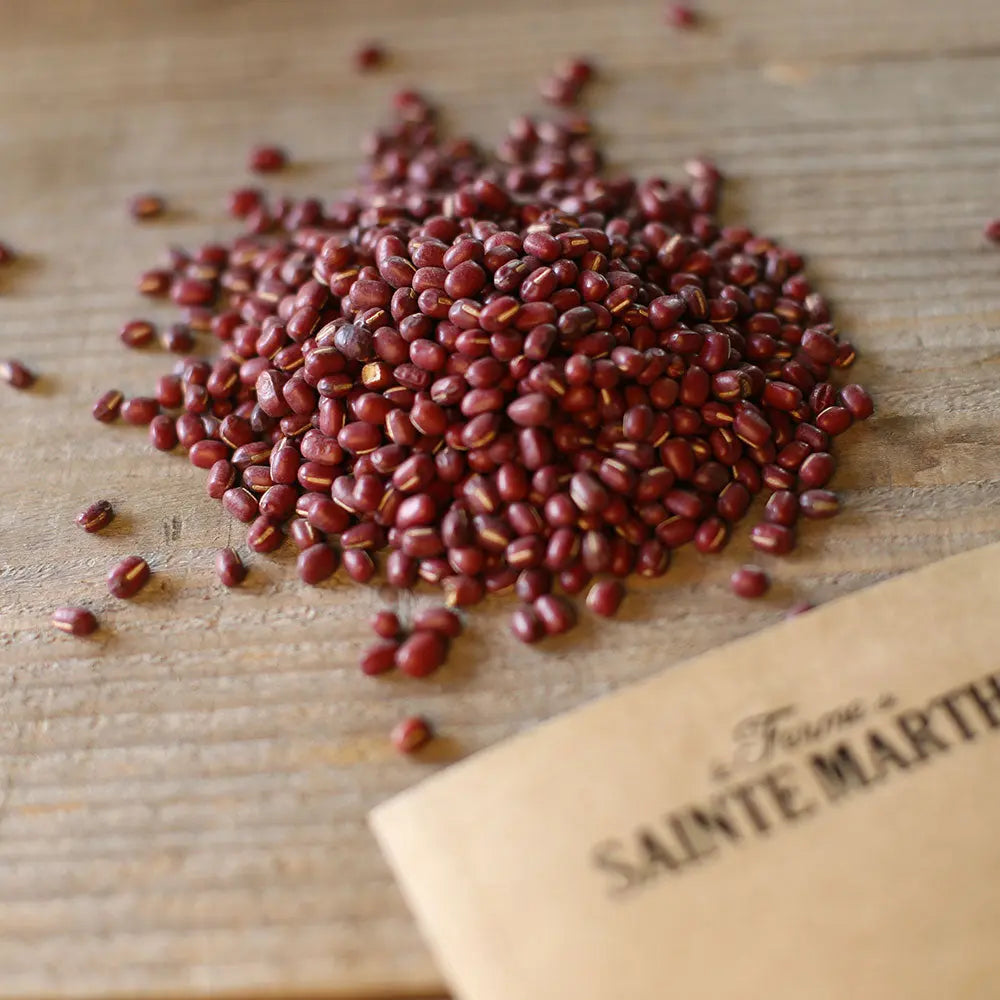RED AZUKI BEAN NT
Vigna angularis
Azuki beans are a very common species in East Asia, especially the red-grained varieties, cultivated and used in cooking and baking for several millennia. They are very often eaten sweet, boiled with sugar, whole, or in the form of a paste then used in baking. They are also prepared in soup, as sprouted seeds, mixed with rice, and made into candy. There are almost as many varieties with diverse colors, speckled or solid, as there are ways to cook them. Their nutritional qualities make them an essential dried vegetable to incorporate into our cooking.
This variety of azuki bean grows to about 30 to 90 cm tall and produces red beans in pods about 10 cm long, 80 to 90 days after emergence.
How to successfully sow red Azuki beans
Sowing: possible from late April to mid-June, in warmed soil, 10°C minimum, but will be faster and more successful around 15 to 20°C. Germination in 7 to 20 days.
Sow 2/3 cm deep in rows spaced about 50/70 cm apart, with a spacing of about 4 cm between rows. Soil: well-drained, can be grown in poor, dry soil, which it will enrich.
Sow under cover, in a pot before transplanting, in cool summer regions.
Growing Red Azuki Beans
Regular watering if there is no rain, water requirements lower than those of a classic bean.
Its growth is relatively slow: sow seeds if necessary and mulch well to control weeds.
Optimal growth temperature: 20°C to 30°C.
Harvest
Harvest takes 80 to 120 days from July to September. Flowering is mostly self-pollinating and lasts about 1 month.









